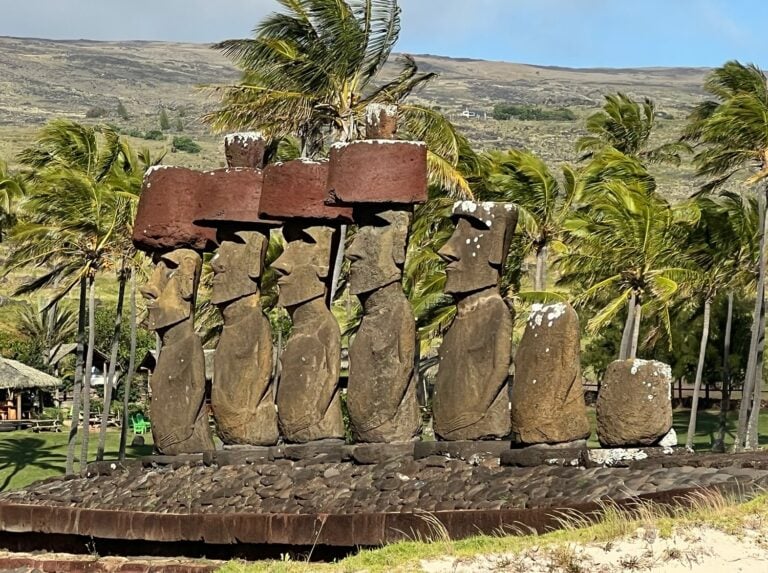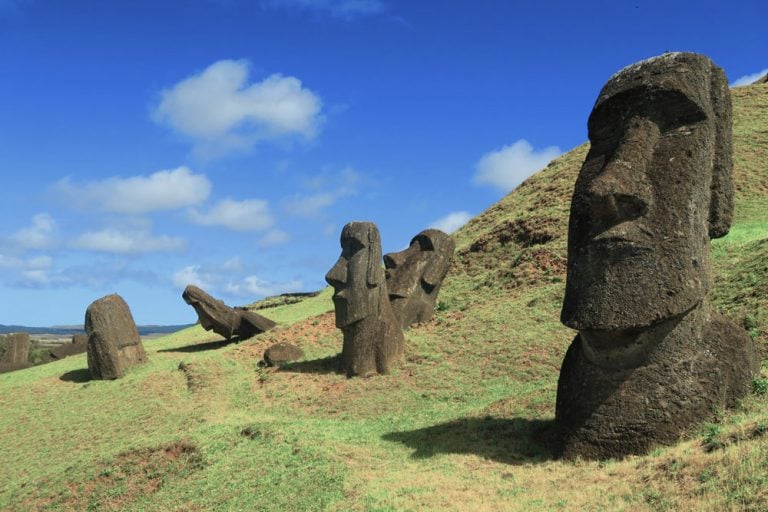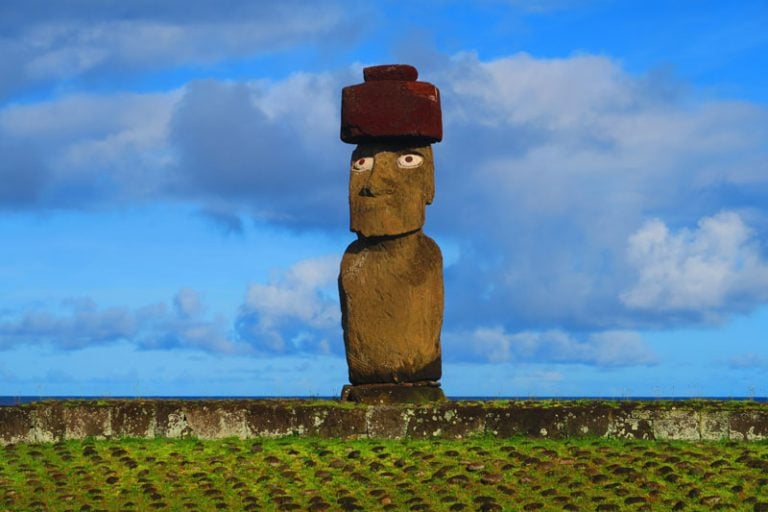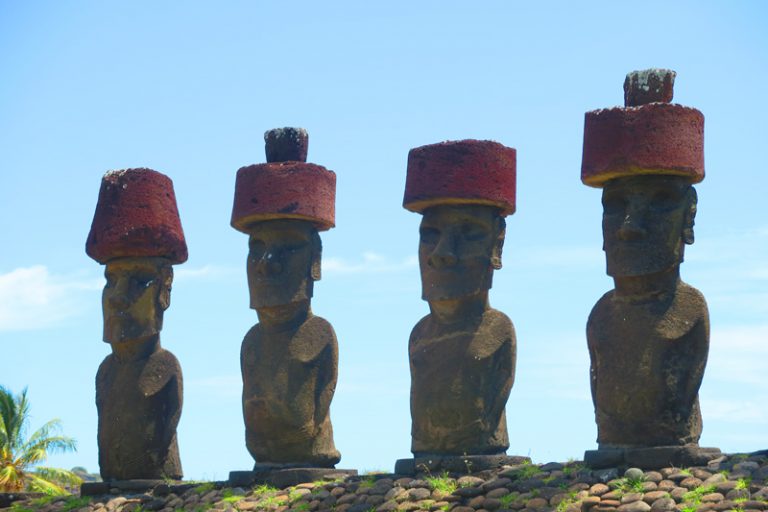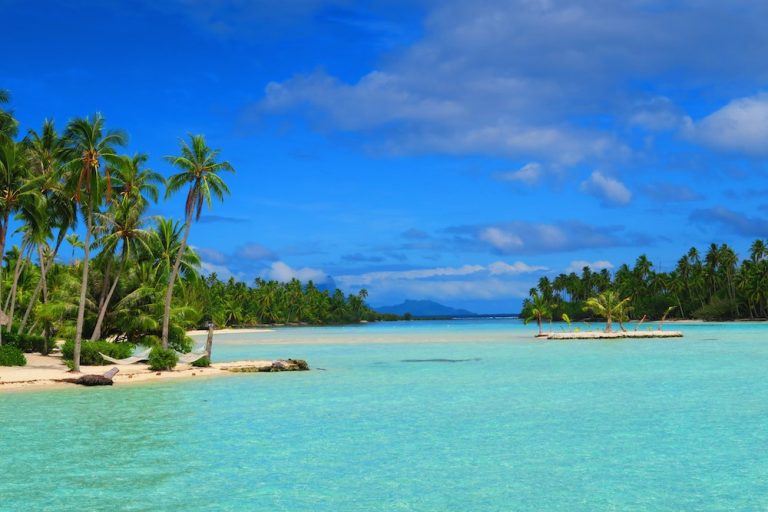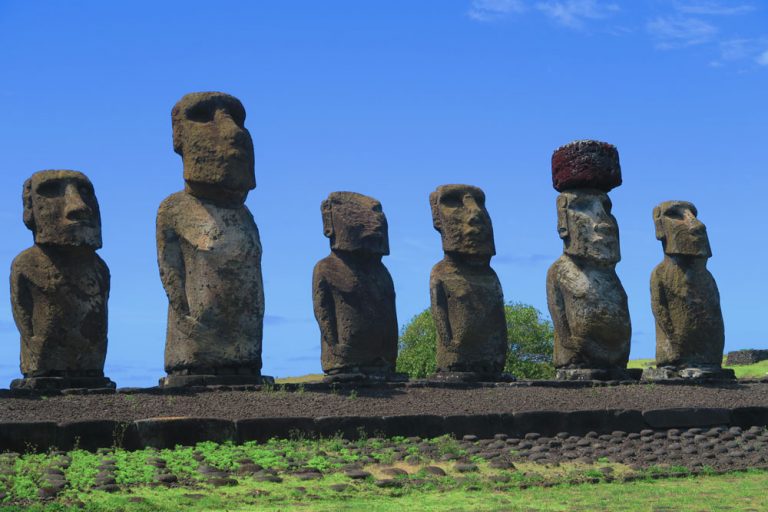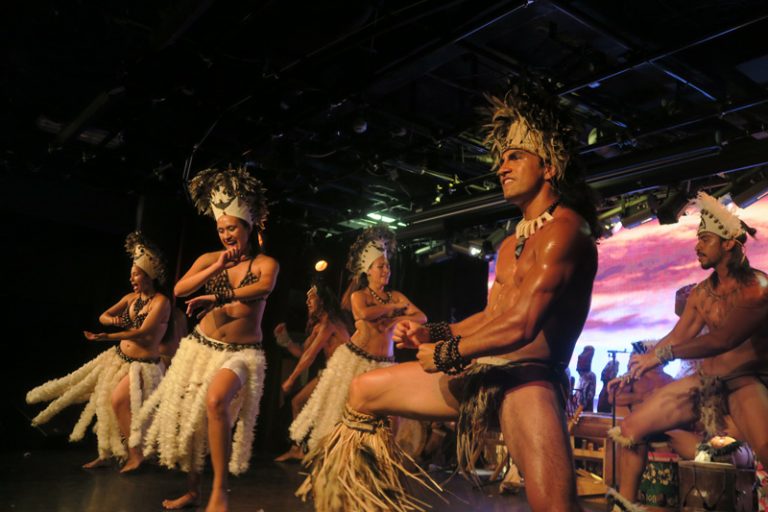Easter Island is relatively small so getting from one point to another should not take up too much time.
Organized tours: If you’re traveling as part of an organized group or a cruise, you’ll be ferried across the island in small buses accompanied by local guides who should have a good degree of knowledge about the ancient history and oral history. They can definitely also provide context to present-day life on the island.
Renting a car: the best way in my opinion for exploring Easter Island is by renting a car and independently visiting the top sites Driving is fairly simple: there’s just one gas station, they drive on the right side and there aren’t too many roads so getting lost is highly unlikely.
Cycling: renting a bicycle is another great way of exploring Easter Island, just be mindful of road conditions.
Horseback: if you’re into riding horses, you can book several tours and explore some of the more remote corners of Easter Island.
On foot: some sites can be easily reached on a short walk from Hanga Roa such as Ahu Tahai, the museum, and the “Cannibal Cave”.
